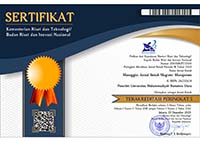Women Participation in Succession Planning Beyond Organizational Barriers and Personal Bias: A Study of Domestic Airline Operators in Nigeria
Abstract
This study examines how women in the workforce participate in succession planning in Domestic Airline Operators in Nigeria under the supervision of the Nigerian Civil Aviation Authority. The Social Action theory was chosen as the study's theoretical foundation and 273 respondents was chosen for this study using random and purposeful sampling methods. The use of questionnaires allowed for the collection of quantitative data. The findings of study revealed that the distribution of strategic duties, employees’ promotion, and other forms of organizational segregation, however, all display gender inequality. Working with seasoned employees who have a track record of success without gender discrimination, as well as understanding the key principles of an effective succession planning and management initiative, can make succession planning a simple and time-saving process. As a result of the findings among others, the government should focus more on passing efficient laws that will support women's empowerment and equity among Nigeria's Domestic Airline Operators.
Keywords
Full Text:
PDFReferences
Adegoke, A, A. (2013). advance human resource management II. Lagos: Chartered Institute of Personnel Management of Nigeria.
Akani, V.C. (2015). Management succession planning and corporate survival in Nigeria: A study of banks in Portharcourt. European Journal of Business and Management, 7(27), 153- 176.
Haj-Karimi, A., Razaeian, A., Hadizadeh, M., & Bonyadi Naeini, A. (2011). Designing model of human resources management competencies in public sector in Iran. Governmental Management Perspective Magazine, Shahid Behesti University, 9, 9 -22.
Haralambos, M., & Holborn, M. (2013). Sociology themes and perspectives. United Kingdom: HarperCollins
Herzberg, F. (1968). One more time: How do you motivate employees? Harvard Business Review, 46(1), 53 -62.
Johnson, D. P. (2010). Contemporary sociological theory: An integrated multi-level approach. New York: Springer Publishers
Linz, S. J., & Semykina, A. (2012). What makes workers happy? Anticipated rewards and job satisfaction? Industrial Relations, 51(4), 811- 844.
Lukina, T. (2013). Half the sky, but how much of the Purse? Fortnightly Thoughts. 53, 17 -18.
Michelle, V. (2011). Focus on talent retention to build bench strength. New York: Cutting Edge Information.
Okojie, P. O. (2010). Higher education in developing countries: Peril and promise. New York: The Task Force on Higher Education and Society.
Osayande, F., Okolie, U. C., & Udom, I. D. (2019). Succession planning and organizational survival: evidence from national business and technical examination board, Benin City, Nigeria. International Journal of Management Science Research, 5(1), 205 -228.
Pines, A. M., & Schwartz, D. (2008). Now you see them, now you don't: Gender differences in entrepreneurship. Journal of Managerial Psychology, 23, 811 -832.
Rothwell, W. J. (2016). Effective succession planning. United State: Amacom Publishers.
Vicente, A., Idigoras, I., & Aldamiz-Echevarria, C, (2009). Gender influence on the succession planning of family owned businesses. Spain: University of the Basque Country Press.
Weber, M. (1947). The Theory of social and economic organization. Berkeley: University of California Press
Willian, B., Weather, R., & Keith, D. (1996). Human resource and personnel management. New York: McGraw-Hill.
Wood, E., Zivcakova, L., & Nosko, A. (2012). Examining the impact of off-task multitasking with technology on real-time classroom learning. Computers and Education, 58(1), 365 -374.
DOI: https://doi.org/10.30596/maneggio.v6i2.15148
Refbacks
- There are currently no refbacks.






